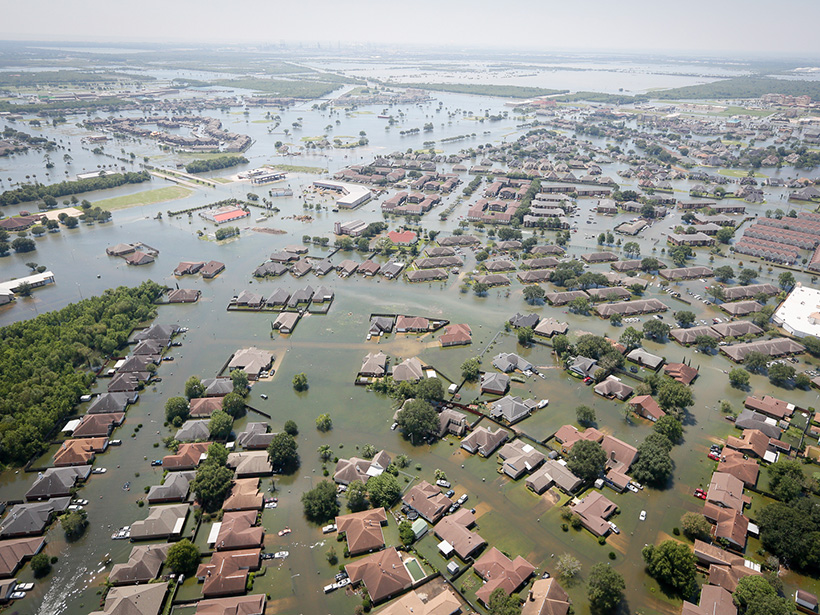A translation of this article was made possible by a partnership with Planeteando. Una traducción de este artículo fue posible gracias a una asociación con Planeteando.
Dioxins—the category of chemicals that includes Agent Orange—have been banned in the United States since 1979. But that doesn’t mean they’re gone. Like in the plot of countless scary movies, dioxins and other banned chemicals are just buried beneath the surface waiting to be unearthed.
A new perspective paper in Journal of Hazardous Materials calls attention to an understudied area: the remobilization of pollutants buried in riverbeds. Chemicals have a knack for binding to sediments, meaning chemical spills in rivers frequently seep into sediments instead of flowing downstream. Future layers of silt bury the pollutants and hide the problem.
But persistent chemicals in riverbeds are “ticking time bombs,” warned Sarah Crawford, an environmental toxicologist at Goethe University Frankfurt and lead author of the paper. The buried chemicals can easily be remobilized. “It just takes one flood event,” she said.
Little Pockets of Pollution
The paper comes from an interdisciplinary research team based mostly in Germany, a country that faced catastrophic floods this year that defied comparison. As the climate warms, similarly intense storms are expected to increase. Floods cause immediate turmoil, but chemical remobilization can prolong the disaster.
“Cohesive sediments are really stable over long ranges of flow velocities, but at some point the sediment bed just fails,” said Markus Brinkmann, an ecotoxicologist at the University of Saskatchewan and a coauthor of the paper.
“Little pockets of contamination are really easily dispersed by flood events.”
When the riverbed fails, the turbulent water fills with sediment. That churning water can spread toxins widely. After Germany’s Elbe river flooded in 2002, for example, hexachlorocyclohexane concentrations in fish were 20 times higher than they were before the floods. In another example from 2017, Hurricane Harvey flooded or damaged at least 13 Superfund sites in the United States and sent cancer-causing compounds flowing into Galveston Bay in Texas.
“Little pockets of contamination are really easily dispersed by flood events,” Brinkmann said.
The location of these little pockets is uncertain, complicating the problem. Urban areas and agricultural hot spots are obvious starting points for research and remediation, “but we just can’t pinpoint all of them,” said Crawford. “Maybe a farmer in the ’60s was spraying DDT. We don’t have records of that.”
Other questions remain unanswered. How bioavailable are reintroduced chemicals? How toxic are chemicals after decades bound to sediments? What is the economic risk of inaction? “A lot of this hasn’t been studied,” noted Crawford.
The recent paper doesn’t attempt to answer questions about the presence and release of riverbed toxins but tries, rather, to spur interdisciplinary research on the growing threat.
Involving the Community
Interdisciplinary research is essential for such a complex problem. As evidence, the paper’s 16 authors include a mix of toxicologists, economists, microbiologists, chemists, and engineers.
“To really accomplish this, particularly at the scale [at which] it needs to be done, you can’t have grad students collect every sample. You really need to engage the public.”
But it’s important that the research expands beyond academia, too. “To really accomplish this, particularly at the scale [at which] it needs to be done, you can’t have grad students collect every sample,” said Ashaki Rouff, an environmental geochemist at Rutgers University–Newark who was not involved in the research. “You really need to engage the public.”
That often means collaborating with marginalized communities. “Issues of climate change and contamination and pollution disproportionately affect communities of color and low-income communities,” Rouff added. Getting residents involved in the research “is a way to empower those vulnerable communities and get them more agency in the environmental health of their community.”
“It’s really important to work with community-based organizations for this type of work, especially in these types of marginalized communities,” agreed Vanessa Parks, an associate sociologist with RAND Corporation who was not involved in the research. Residents of at-risk regions are well aware of the threat next door; excluding them from the conversation can increase the frustration and psychological burden of living near a contaminated site.
“Working with communities and having open dialogue about the risks and about environmental monitoring can help engender trust,” Parks said.
Ticking Time Bombs Get Louder
While the paper is a call for transdisciplinary action, Crawford and Brinkmann and their colleagues have already facilitated a research network to address the issue. They brought together at RWTH Aachen University in Germany graduate students from multiple disciplines (engineering, economics, ecotoxicology, and more) to research different angles of flood risk and contaminant mobilization. They published an open-access article on their efforts in 2017.
“I really hope to move forward working in an interdisciplinary manner,” said Crawford. “I hope we train this next generation of scientists to be able to communicate across different disciplines.”
It takes only one fast moving flood to rip up buried toxins and contaminate an entire area. As the climate warms and storms intensify, the ticking time bombs of polluted river sediments are only getting louder.
—J. Besl (@J_Besl), Science Writer
This news article is included in our ENGAGE resource for educators seeking science news for their classroom lessons. Browse all ENGAGE articles, and share with your fellow educators how you integrated the article into an activity in the comments section below.
Citation:
Besl, J. (2021), When rivers are contaminated, floods are only the first problem, Eos, 102, https://doi.org/10.1029/2021EO163034. Published on 10 September 2021.
Text © 2021. The authors. CC BY-NC-ND 3.0
Except where otherwise noted, images are subject to copyright. Any reuse without express permission from the copyright owner is prohibited.


